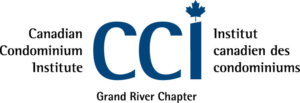5 Tips to Keep Your Virtual Meetings Productive

Whether it be a virtual meeting, conference, or webinar, either can be tough to get through while keeping them productive. Being behind a screen for the last couple years has taken away any excitement that was left behind the simplicity of virtual meetings.
Floods of “can you hear me’s”, paired with an ominous blank screen staring right back at you. It can be exhausting to lead any type of proactive discussion. Can they hear you? Is your screen frozen? Have they muted you while they go about their other tasks?
You can’t control everything that happens on the other side of the screen, but you can be proactive to ensure that you set yourself up to lead your next virtual meeting with ease.
- Make sure they know who will be leading the meeting.

Meeting, conference, or webinar: your audience and team will want to know who will be the main speakers of the event. This should be detailed in all communication, from the first event invite, to all social posts and any update after. By giving your meeting a “face”, you humanize the digital element of the virtual meeting.
2. Greet every guest as they come in.
Certainly, you make sure to greet guests as they come in, but how many could you confidently say are given a personal greeting? If you find yourself in the middle of a conversation with one guest, and another guest has entered, try to find a way to work them into the conversation. Invite them to participate, or politely interject that you acknowledge their presence. By doing this, not only do you elicit a guest to use their “off-mic” option, but you may even see a camera or two turn on.
How you start your meeting will determine the mood throughout the lecture. Making and maintaining a connection with your guests is imperative to virtual meeting success
3. Let guests know when they can ask questions.

What may seem obvious to you, may not to another guest. Before you formally start, take a moment to relay how you will be presenting your material, and when you have planned for questions. Be clear if you’d prefer they keep their questions until certain parts of the presentation, or if you can take questions while presenting.
Additionally, remind your guests of the use of the “hand up” tool on most virtual conference apps. Not only does this feature give a polite nudge to the speaker that someone would like to speak, it also puts them in order. As long as you are taking questions from left to right, then you are going by the order in which the hands were raised.
If you have set time aside at the end for a Q&A, make sure your audience knows this prior to starting the lecture. You may have some guests who will stress about not having enough time for you to answer their questions if you don’t answer them in the middle of your presentation. By letting them know that you have set time aside, you are alleviating any unnecessary stress that anyone in your audience may be feeling.
4. Make time for breaks.

This isn’t as crucial if your meeting is under an hour.
However, once you start ranging on the 1.5-2 hour mark, you should be planning for a quick break.
The unofficial rule for breaks is 5-minutes for every hour. So, for 1.5-hours, that’s approximately 7-minutes. No matter the content, staring at a screen for long periods of time is draining. Breaks are necessary for ensuring your guests have the capacity to take in new information and have the energy to continue to participate in the meeting.
For example, if you are hosting a 3-hour meeting: plan for a 15-minute break at the 1.5-hour mark. Ask your guests to return within 10-minutes, and then not only do you have a 5-minute buffer for any straggler, those final few minutes before you pull the focus back on you, but your audience is also free to engage together across the screens
5. Give everyone an opportunity to speak at the end of the meeting.
After your Q&A (if you have planned for one), take a moment to give your guests the floor to speak on any final thoughts they may have.
This is also where you want to include and/or summarize the next steps, not only for yourself but for any attendee you’ve allocated any kind of responsibility to.

For example –
Mary will have the report by next Friday.
Jerry will touch base with Mike by end of the day.
The speaker will send out meeting notes by tomorrow morning.
You’ll want to aim to end your meeting with the same energy as you’ve started. No one should be leaving your meeting feeling drained, and uninspired to carry out their task. Luckily for you, you’ve followed our 5 tips to ensure your meeting was successfully executed!

Maggie Matian
Marketing Manager for CCI Grand River


















 Here are some important considerations to add to your next Board meeting agenda to ensure your condo property will provide enjoyment and pleasure for unit owners:
Here are some important considerations to add to your next Board meeting agenda to ensure your condo property will provide enjoyment and pleasure for unit owners:


 On the flip side, you may be the incoming condominium manager who is taking over a contract. Do you know what to ask for in advance? What to ask for at the deadline? How do you make the transition as seamless as possible for the residents?
On the flip side, you may be the incoming condominium manager who is taking over a contract. Do you know what to ask for in advance? What to ask for at the deadline? How do you make the transition as seamless as possible for the residents?  missed.
missed. 







